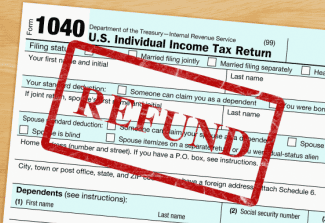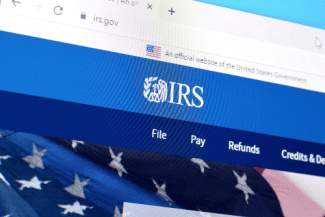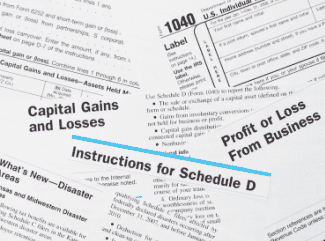IRS Provides Tax Relief to Victims of Hurricane Sandy

Following recent disaster declarations for individual assistance issued by the Federal Emergency Management Agency, the IRS announced today that affected taxpayers in Connecticut, New Jersey and New York will receive tax relief. Other locations may be added in coming days based on additional damage assessments by FEMA.
The tax relief postpones various tax filing and payment deadlines that occurred starting in late October. As a result, affected individuals and businesses will have until Feb. 1, 2013 to file these returns and pay any taxes due. This includes the fourth quarter individual estimated tax payment, normally due Jan. 15, 2013. It also includes payroll and excise tax returns and accompanying payments for the third and fourth quarters, normally due on Oct. 31, 2012 and Jan. 31, 2013 respectively.
The IRS will abate any interest, late-payment or late-filing penalty that would otherwise apply. The IRS automatically provides this relief to any taxpayer located in the disaster area. Taxpayers need not contact the IRS to get this relief.
In addition, the IRS is waiving failure-to-deposit penalties for federal payroll and excise tax deposits normally due on or after the disaster area start date and before Nov. 26, if the deposits are made by Nov. 26, 2012. Details on available relief can be found on the disaster relief page on IRS.gov.
Beyond the relief provided by law to taxpayers in the FEMA-designated counties, the IRS will work with any taxpayer who resides outside the disaster area but whose books, records or tax professional are located in the areas affected by Hurricane Sandy. All workers assisting the relief activities in the covered disaster areas who are affiliated with a recognized government or philanthropic organization are eligible for relief. Taxpayers who live outside of the impacted area and think they may qualify for this relief need to contact the IRS at 866-562-5227.
The tax relief is part of a coordinated federal response to the damage caused by the hurricane and is based on local damage assessments by FEMA. For information on disaster recovery, individuals should visit disasterassistance.gov.
The IRS wants to assure taxpayers, businesses and tax preparers that it is working aggressively to monitor the situation and provide additional relief as needed.
So far, IRS filing and payment relief applies to the following localities:
In Connecticut (starting Oct. 27): Fairfield, Middlesex, New Haven, and New London Counties and the Mashantucket Pequot Tribal Nation and Mohegan Tribal Nation located within New London County;
In New Jersey (starting Oct. 26): Atlantic, Bergen, Burlington, Camden, Cape May,Cumberland, Essex, Gloucester, Hudson, Hunterdon, Mercer, Middlesex, Monmouth, Morris, Ocean, Passaic, Salem, Somerset, Sussex, Union and Warren;
In New York (starting Oct. 27): Bronx, Kings, Nassau, New York, Orange, Putnam, Queens, Richmond, Rockland, Sullivan, Suffolk, Ulster and Westchester;
In Rhode Island (starting Oct. 26): Newport and Washington counties.
Retirement Plans Can Make Loans
The Internal Revenue Service also announced that 401(k)s and similar employer-sponsored retirement plans can make loans and hardship distributions to victims of Hurricane Sandy and members of their families.
401(k) plan participants, employees of public schools and tax-exempt organizations with 403(b) tax-sheltered annuities, and state and local government employees with 457(b) deferred-compensation plans may be eligible to take advantage of these streamlined loan procedures and liberalized hardship distribution rules. Though IRA participants are barred from taking out loans, they may be eligible to receive distributions under liberalized procedures.
Retirement plans can provide this relief to employees and certain members of their families who live or work in the disaster area. To qualify for this relief, hardship withdrawals must be made by Feb. 1, 2013.
The IRS is also relaxing procedural and administrative rules that normally apply to retirement plan loans and hardship distributions. As a result, eligible retirement plan participants will be able to access their money more quickly with a minimum of red tape. In addition, the six-month ban on 401(k) and 403(b) contributions that normally affects employees who take hardship distributions will not apply.
This broad-based relief means that a retirement plan can allow a Sandy victim to take a hardship distribution or borrow up to the specified statutory limits from the victims retirement plan. It also means that a person who lives outside the disaster area can take out a retirement plan loan or hardship distribution and use it to assist a son, daughter, parent, grandparent or other dependent who lived or worked in the disaster area.
Plans will be allowed to make loans or hardship distributions before the plan is formally amended to provide for such features. In addition, the plan can ignore the limits that normally apply to hardship distributions, thus allowing them, for example, to be used for food and shelter. If a plan requires certain documentation before a distribution is made, the plan can relax this requirement as described in the announcement.
Ordinarily, retirement plan loan proceeds are tax-free if they are repaid over a period of five years or less. Under current law, hardship distributions are generally taxable. Also, a 10 percent early-withdrawal tax usually applies.
With AAOA, landlords have resources at their fingertips. Check out our Landlord Forms page.
American Apartment Owners Association offers discounts on products and services for landlords related to your rental housing investment, including rental forms, tenant debt collection, tenant background checks, insurance and financing. Find out more at www.joinaaoa.org.















 Accessibility
Accessibility